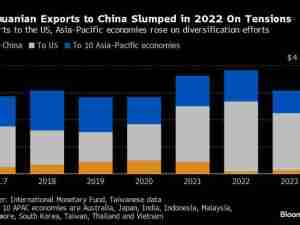Oil was little changed as tensions remained high over how an escalating trade feud between two of the world’s top economic super powers would hit oil demand.
Futures were setting up for their biggest weekly loss of the year, even with supply outages in the North Sea, curbs by OPEC+ and a range of crises from Venezuela to Libya.
“These worries over the trade situation with China is becoming more pronounced here. It really strikes at the heart of the demand side of the equation of crude oil and the fall out is across the Asian region,” said John Kilduff, a partner at Again Capital. This is a really bad set up for crude. I think that’s why you’re seeing this long liquidation.”
Oil plunged 5.7% in New York on Thursday as investors fled riskier assets following the White House’s blacklisting of Huawei Technologies Co. and several Chinese surveillance companies, moves that have been met with defiance by Beijing. A recovery in prices was dragged by the U.S. stock market mid morning.
West Texas Intermediate crude for July delivery rose 3 cents to $57.94 a barrel on the New York Mercantile Exchange at 11:36 a.m. local time, after climbing as much as $1.07 earlier. WTI is down 8% this week, heading for the biggest weekly loss since Dec. 21.
Brent for July settlement was up 6 cents to $67.82 a barrel on the London-based ICE Futures Europe exchange after tumbling 4.6% Thursday. Brent has fallen more than 6% this week. The global oil benchmark was at a $9.86 premium to WTI.
The moves come ahead of the U.S. Memorial Day long weekend, what many market participants consider the start of summer driving season.
“There’s no doubt that concerns about the U.S.-China trade situation are still around. And there is some negativity in the market. But with that said, it’s driving season and that means you get an overwhelming spike in demand in the U.S. and everywhere else,” said Bob Yawger, director of futures at Mizuho Securities USA. “It looks like there could be some upside.”
While many macro investors and generalists watch outright oil prices move higher or lower, specialized oil traders tend to monitor term structure, or, the spread between contract months as an indication of supply and demand. Even with oil prices plunging this week, those spreads have remained resilient. Nevertheless, the premium for July versus September jumped on Thursday—by 18% to $2.20 a barrel—suggesting traders remain nervous about scarcity of supply short-term supply.
OPEC Cuts
Anxiety over the trade war is taking precedence over a supply backdrop riddled with risks including a tense Middle East, a steadily deteriorating situation in Venezuela and production disruptions from Russia to Nigeria. The drop in oil prices may give the Organization of Petroleum Exporting Countries and its allies more incentive to extend their production cuts beyond June.
U.S. President Donald Trump described Huawei as “very dangerous” on Thursday even as he suggested the Chinese technology giant could be included in some kind of trade deal. The White House also proposed tariffs on goods from countries that it deems are engaging in competitive devaluation of their currencies. In return, China blamed Washington for wrecking trade talks and insisted the U.S. must alter its “wrong practices” before negotiations can resume. Still, Beijing said on Friday that it was committed to striking a trade deal, according to a Chinese official.


_-_28de80_-_939128c573a41e7660e286f3686f2a6e25686350_yes.jpg)





